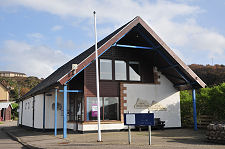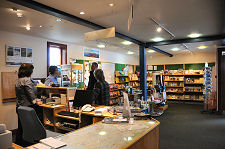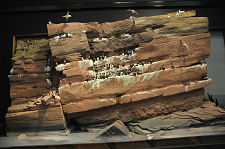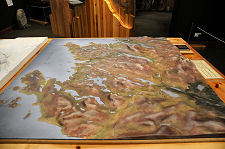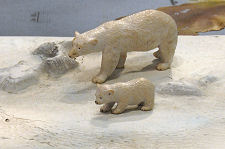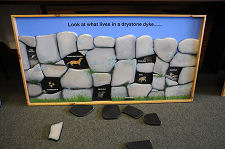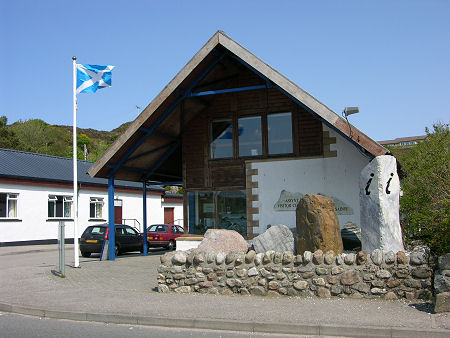 Assynt Visitor Centre |
A visit in October 2017 found that the Assynt Visitor Centre had permanently closed and the building was to let. Another in June 2023 showed that the building had been given a new lease of life as Delilah's Restaurant and Bar, shown below. It's good to see the building brought back to life. The rest of this page remains much as it was when the visitor centre was open, to give a sense of what it had to offer. (Continues below image...)
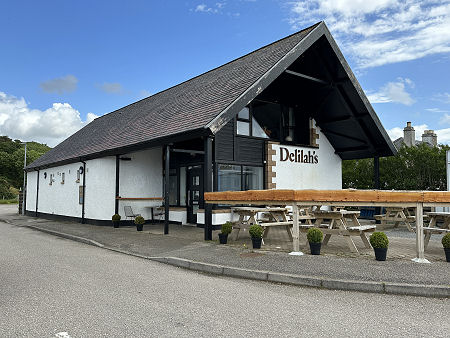 Delilah's Restaurant and Bar, June 2023 |
Standing towards the south end of Lochinver's Main Street and looking across it out over Loch Inver is the superb Assynt Visitor Centre. The visitor centre has stood here since it was opened by Magnus Magnusson in 1995 and today serves as a combination of Tourist Information Centre, bookshop, museum of natural and social history, activity centre and base for the Highland Council rangers. Entry is free, and a visit is highly recommended.
The visitor centre's most obvious exhibit stands outside the front of the building and comprises a collection of very large chunks of the rocks of Assynt. The geology of the area is one of its most striking factors, and it is interesting to see some of the component parts set out to be seen and touched. This is a theme that recurs within the centre, as is another which becomes obvious before you enter. A large window by the door is home to a magnificent tiled vista of Loch Inver and Lochinver complete with a large heron. This was produced for the centre by Highland Stoneware Pottery, based in Lochinver.
At first sight the interior is fairly indistinguishable from any other good tourist information centre. Helpful staff, free leaflets promoting the many visitor attractions in the area, and a well stocked shop carrying books of local interest, maps, gifts postcards and so on.
As you move towards the rear of the building you begin to realise what else the visitor centre has to offer. In the centre of the ground floor is a large table containing a three dimensional map of Assynt showing the individual and highly distinct mountains which so characterise this area.
The visitor centre is on two floors, and visitors are encouraged to explore the upper floor, housed within the narrowing apex of the roof. At one end this offers lovely views out over Loch Inver, while at the other it offers a different perspective down to the exhibits of the ground floor.
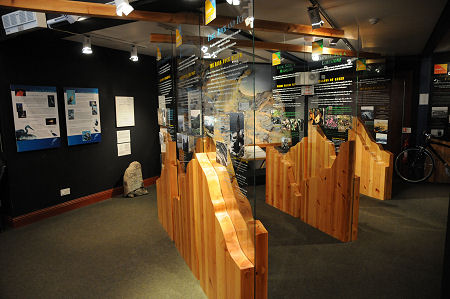 Inside the Visitor Centre |
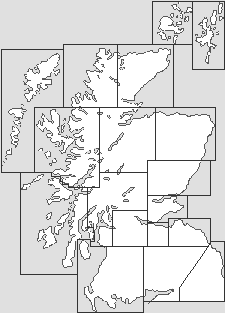
|
|
|
Visitor InformationSee note at head of text. |
 View from the Upper Floor |
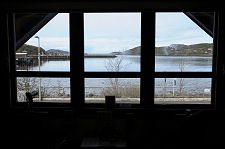 View from Centre of Loch Inver |
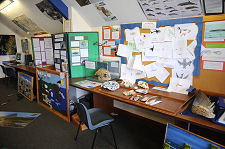 Wildlife of Assynt |
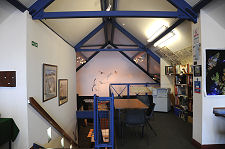 Upper Floor |
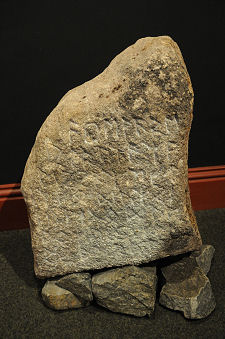 Runic Stone |
